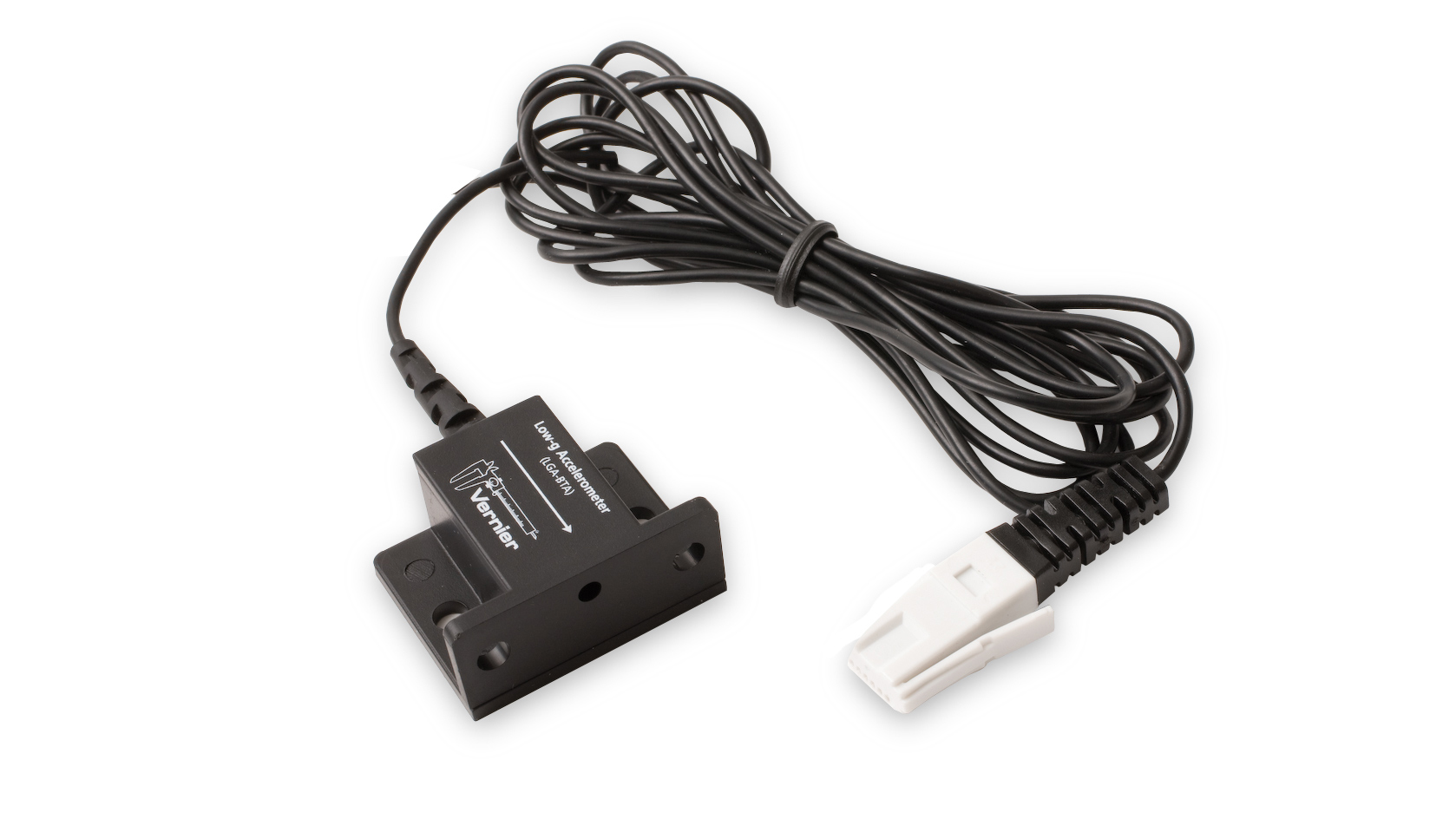Troubleshooting
- Primary Test: Point the sensor arrow upward and hold sensor motionless; reading should be approximately 9.8 m/s². Point arrow downward; reading should be approximately -9.8 m/s².
- Secondary Test: Make sure that the line marked by the arrow on the label of the sensor is positioned parallel to the direction of intended acceleration measurement.
Additional Troubleshooting
- What is the difference between your accelerometers?
- What can I do to reduce the error in Physics with Vernier Experiment 9, Newton's 2nd Law?
- Can I use an accelerometer to measure velocity or position?
- How do you calibrate an accelerometer?
- What does an accelerometer actually measure?
- What are the dimensions of the mounting holes on the Vernier wired (BTA) accelerometers?
Specifications
- Power: 30 mA @ 5VDC
- Range: +/-50 m/s² (+/-5g)
- Accuracy: +/-0.5 m/s² (+/- 0.05g)
- Frequency Response: 0 to 100 Hz
Calibration
Calibrate? Usually, no. The sensor is individually calibrated before shipping. For many experiments, you may use the stored calibration and zero the sensor before collecting data. For more information, see How do I calibrate my sensor?
HORIZONTAL DIRECTION
If you wish to calibrate the sensor for acceleration in the horizontal direction, you will conduct a two-point calibration.
- First point
⚬ position the sensor with the arrow pointing down
⚬ define this reading as -9.8 m/s² or -1 g - Second point
⚬ rotate the sensor so that the arrow points up
⚬ define this reading as +9.8 m/s² or +1 g
VERTICAL DIRECTION
If you wish to calibrate the sensor for acceleration in the vertical direction, first decide which direction (up or down) will be the positive direction. Our recommendation is to consider up as positive and conduct the experiment with the vertical direction arrow pointing vertically upward.
- First point
⚬ position the sensor with the arrow pointing upward
⚬ define this reading as 0 m/s² or 0 g - Second point
⚬ rotate the sensor so that the arrow points downward
⚬ define this reading as -19.6 m/s² or -2 g
Related Products
- 25-g Accelerometer (
ACC-BTA ) - 3-Axis Accelerometer (
3D-BTA ) - Go Direct® Acceleration Sensor (
GDX-ACC ) - Go Direct® Force and Acceleration Sensor (
GDX-FOR ) - Go Direct® Sensor Cart (
GDX-CART-G ) - Go Direct® Sensor Cart (
GDX-CART-Y )

